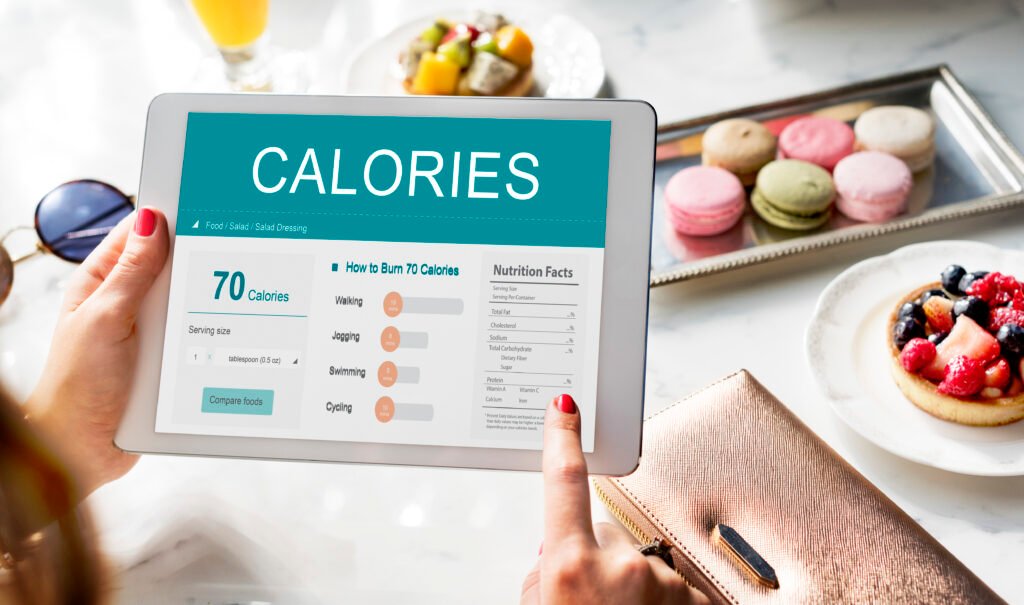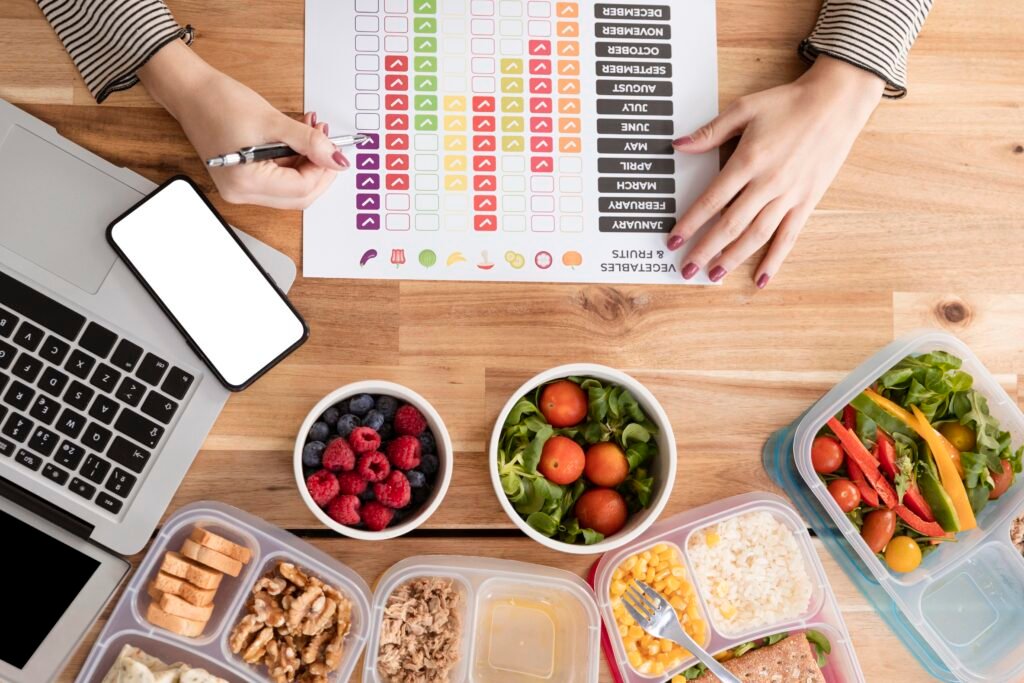5 Essential Tips for Using a Weight Loss Calculator Effectively
I confess that for a long time, I felt completely lost when it came to losing weight. I knew I needed to watch my diet and exercise… but one thing bothered me: I really had no idea how many calories I should consume per day, or in terms of protein and carbohydrates, and whether I was on the right track.
That’s when I discovered the weight loss calculator. At first, I thought it would be something complicated, full of numbers and difficult formulas — but I was surprised. In fact, it was as if I finally understood how my body works. I discovered how many calories I needed to lose weight in a healthy way, without exaggeration or crazy restrictions like you already know.
From that moment on, I realized that losing weight doesn’t have to be a struggle in the dark. The weight loss calculator has become an essential tool in my routine.
Today I want to share with you 5 tips that made all the difference for me — and that will certainly help you too.
Achieving weight loss goals can often feel overwhelming, especially with the myriad of options available to track progress and monitor caloric intake. One invaluable tool in this journey is the weight loss calculator. This digital assistant can help streamline your efforts, making it clearer how many calories you need to consume and expend in order to lose weight effectively. In this article, we’ll explore essential tips to maximize the benefits of using the weight loss calorie calculator, ensuring that it serves as an effective component of your weight loss strategy.
Understanding the Weight Loss Calculator

Before diving into actionable tips, it’s crucial to understand what a weight loss calculator is and how it functions. A weight loss calculator estimates the number of calories you should consume daily to reach your weight loss goals. This tool considers various factors including age, gender, current weight, height, and activity level. By inputting these variables, you can derive a personalized caloric target, which is fundamental in planning meals and activities.
Using a calorie calculator for weight loss not only helps in setting realistic goals but also empowers you with knowledge about your body’s needs. With a clear understanding of this, let’s look into effective strategies to utilize this tool to its fullest potential.
1. Input Accurate Data
One of the most critical components of an effective weight loss calculator experience is the accuracy of the data you provide. The effectiveness of the weight loss calorie calculator is directly correlated with the precision of your inputs. Here’s what to keep in mind:
Current Weigh: Input your exact current weight, as even small discrepancies can affect the outcome.
Height: Be accurate, as your height plays a significant role in calculating your Basal Metabolic Rate (BMR).
Activity Level: Choose the activity level that best describes your lifestyle. Many calculators offer various options: sedentary, lightly active, moderately active, or very active.
By ensuring that your information is correct, the calorie calculator for weight loss can give you a more precise caloric target, aiding in more effective weight management.
2. Use Regularly for Adjustments
Once you’ve established a caloric baseline, it’s important to revisit the weight loss calculator periodically. Weight loss is seldom linear; as you lose weight, your caloric needs will change. Regularly updating your weight and recalibrating your caloric goals can help maintain momentum. Here’s a checklist for maintaining your calculator use:
- Reassess weight weekly or bi-weekly.
- Input any significant changes in your activity level.
- Adjust your caloric intake based on progress (e.g., plateaus may require recalibrating).
These check-ins not only help you stay on track but also keep you engaged in your weight loss journey.
3. Understand Macronutrient Distribution
While the weight loss calorie calculator provides a general caloric target, understanding how to distribute these calories among macronutrients is equally important. This means knowing how many grams of protein, carbohydrates, and fats you should be consuming daily. Many calculators allow you to set macronutrient goals based on your preferences or dietary requirements.
Sample Macronutrient Table
| Macronutrient | Suggested Percentage of Daily Intake | grams (for a 1500 calorie diet) |
| Protein | 25% | 94 grams |
| Carbohydrates | 50% | 188 grams |
| Fats | 25% | 42 grams |
To use this effectively, consider your lifestyle, food preferences, and dietary restrictions when setting these targets to ensure sustainability.
4. Integrate with a Food Diary
Pairing the weight loss calculator with a food diary can enhance your calorie counting and tracking endeavors. A food diary allows you to log daily meals, snacks, and beverages, providing insights into your eating patterns. This can help identify areas for improvement and ensure you’re adhering to your caloric goals.
Using a combination of a calorie calculator for weight loss and a food diary can provide clarity on whether you truly understand portion sizes and food choices. Consider using apps like MyFitnessPal or Lose It!, which integrate calorie tracking with comprehensive food databases for convenience.
5. Stay Flexible and Patient
Although a weight loss calculator is a powerful tool, it’s important to remember that weight loss is a journey, not a race. Factors such as hormonal changes, stress levels, and metabolic adaptations can affect your progress in ways that a calculator cannot predict. Embrace flexibility in your approach:
– Allow yourself breaks if you experience burnout.
– Don’t be discouraged by plateaus; they are natural.
– Adjust your goals as necessary to reflect your current lifestyle and health conditions.
all about Weight Loss Calculator
This weightloss calculator estimates your daily calorie needs for healthy weight loss. To lose weight, you need to create a calorie deficit (burn more calories than you consume). It also functions as a calorie calculator, helping to determine the calorie burn required for your weight goal. Maintaining a healthy calorie balance is crucial for weight loss success. Use this weight loss estimator as a starting point to set your personalized plan based on your daily calorie needs.
Tool Creation: We (Team) of calculator-online.net created this tool using the scientific formulas that we mentioned below. The calculations are reviewed by our Experts and do best to provides reliable estimations as possible.
Checklist for Maintaining a Flexible Approach
- Set realistic short-term and long-term goals.
- Celebrate non-scale victories (improved energy, better sleep).
- Be open to adjusting your plan based on your body’s feedback.

⭐ My Conclusions: Tips and Strategies for Using the Weight Loss Calculator Successfully
After understanding in depth how a weight loss calculator works, here are my main practical tips, based on everything I learned:
✅ Be honest with your data: There is no point in entering a higher activity level or an incorrect weight. The more accurate it is, the more effective your plan will be.
✅ Update your data whenever there are changes: Have you lost weight? Have you changed your exercise routine? Go back and recalibrate. Your body changes, and so do your calorie needs!
✅ Don’t just focus on calories, focus on quality: Use the calculator as a basis, but prioritize nutritious foods, rich in fiber, protein and healthy fats.
✅ Combine it with smart habits: Write down your meals (a simple diary already works wonders), take care of your sleep, manage stress and maintain a routine of physical activities.
✅ Be flexible and patient: Sustainable results take time. If an event, trip or day comes up that isn’t as planned, don’t panic. Get back on track the next day.
➡️ Remember: the weight loss calculator doesn’t work miracles on its own, it’s your guide. Success lies in the daily choices you make.
FAQs About Weight Loss Calculators
1. How accurate are weight loss calculators?
While they provide valuable estimates, results can vary significantly based on individual factors. It’s best to use them as a guide rather than an absolute measure.
2. Can I lose weight without a calculator?
Yes, you can lose weight by tracking your meals manually, but a calculator simplifies the process by providing tailored caloric needs.
3. Is it healthy to follow a strict calorie limit?
Following a strict calorie limit can be harmful. Instead, focus on nutritious foods that fit within your caloric goals.
4. What should I do if I stop losing weight?
Reassess your caloric needs, consider increasing physical activity, and consult with a healthcare provider if necessary.
5. Are there calculators for specific diets?
Yes, many calculators can be tailored to specific diets, such as ketogenic, paleo, or vegan.
6. How do I track calories outside my home?
Use mobile apps to log food intake when eating out or on the go for convenience.
7. What is a calorie deficit? A calorie deficit occurs when you consume fewer calories than your body burns, forcing your body to use stored fat for energy, leading to weight loss.
8. How often should I use the weight loss calculator? It’s recommended to use it periodically, perhaps every few weeks or whenever your weight or activity level changes significantly, to recalibrate your goals.
9. Can a weight loss calculator help with muscle gain goals too? Some advanced calculators can estimate calorie needs for muscle gain (a calorie surplus), but their primary function is often for weight loss.
10. What if the calculator’s recommendations make me feel too hungry? If you feel excessively hungry, it might indicate that your calorie deficit is too aggressive. It’s important to adjust your intake to a more sustainable level and focus on satiating, nutrient-dense foods.
11. Should I consult a professional before using a weight loss calculator? While calculators are helpful tools, consulting a healthcare professional or registered dietitian is always recommended, especially if you have underlying health conditions or specific dietary needs, to ensure your plan is safe and effective.
By following these essential tips and strategies, you can effectively utilize a weight loss calculator to navigate your path to weight loss successfully. Remember that the key to achieving lasting results is consistency and adaptability. Stay engaged with your progress, continue to educate yourself, and embrace the journey toward a healthier you.
As you embark on this journey, consider checking out reliable resources for further reading, such as [Healthline](https://www.healthline.com) and [WebMD](https://www.webmd.com), which offer additional insights on weight loss strategies and nutrition. For more detailed guides on meal planning and maintaining a balanced diet, visit our internal sections on [meal planning tips](#) and [nutritional guides.
In conclusion, remember that a weight loss calculator is just a tool. The real change comes from within and your commitment to making healthier choices every day. Happy tracking!
See more articles:
7 Smart Ways to Build Thermogenic Meals That Maximize Fat Burning
7 Morning Habits That Support Healthy and Lasting Weight Loss
Notes: Maximizing Your Weight Loss Calculator 📊
This article provides a comprehensive guide to effectively using a weight loss calculator to achieve your weight loss goals. It details the calculator’s function, emphasizing the importance of accurate data input (weight, height, activity level) for precise calorie target calculation.
Key takeaways include:
- Accurate Data is Crucial: Emphasizes the need for precise input of personal data for accurate calorie calculations.
- Regular Adjustments: Highlights the importance of periodically updating data as weight changes to maintain momentum.
- Macronutrient Distribution: Explains how to balance protein, carbohydrates, and fats within the calculated calorie target for sustainable results.
- Food Diary Integration: Recommends combining the calculator with a food diary to track eating patterns and ensure adherence to caloric goals.
- Flexibility and Patience: Stresses the importance of a flexible approach, acknowledging that weight loss is not linear and requires adjustments over time.
The article also references helpful YouTube videos:
- Calorie Calculator For Weight Loss #caloriedeficit #lowcarb #weightloss by Eric Roberts
- How To Calculate A Calorie Deficit For Weight Loss | Nutritionist Explains | Myprotein by Myprotein
- The EASIEST Way To Calculate Your Calories To Lose Belly Fat by Doctor Mike Diamonds
- How Many Calories Should You Eat To Lose Fat? (GET THIS RIGHT!) by Jeremy Ethier
- Weight Loss CALORIE CALCULATOR / CALORIE DEFICIT For Beginners by Michelle Roots Fitness & Nutrition Coach
These videos offer further insights into calorie deficits and effective weight loss strategies. Remember that the weight loss calculator is a tool to guide you, and success depends on consistent effort and healthy choices.
Share this article with your friends and family so they can get more tips.














Post Comment